Honda XL750 Transalp Review
Transalp test by Trevor Hedge
Once again, the choices for consumers in the mid-large capacity adventure bike category have expanded with the introduction of Honda’s new XL750 Transalp.
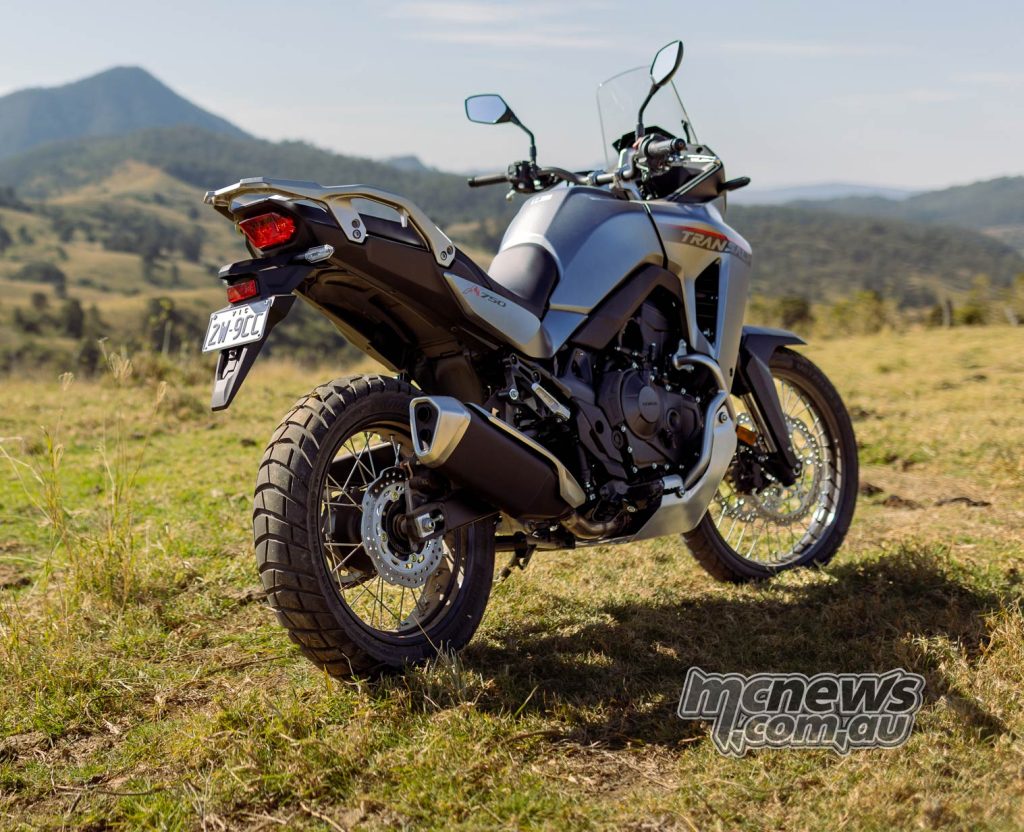
Honda see this as a non-threatening option in their line-up that would make sense for riders stepping up from their very successful and competent 500s. Honda told us that they are also finding a fair bit of interest from owners of the Africa Twin that are now ready to down-size.
We can’t really talk about the new Transalp without repeatedly comparing it to the also very affordable new Suzuki 800 DE and some of the other 21-inch fronted contemporaries. So let’s just jump right in on that subject. The Transalp’s accessibility and affordability are pretty strong trump cards right off the bat.
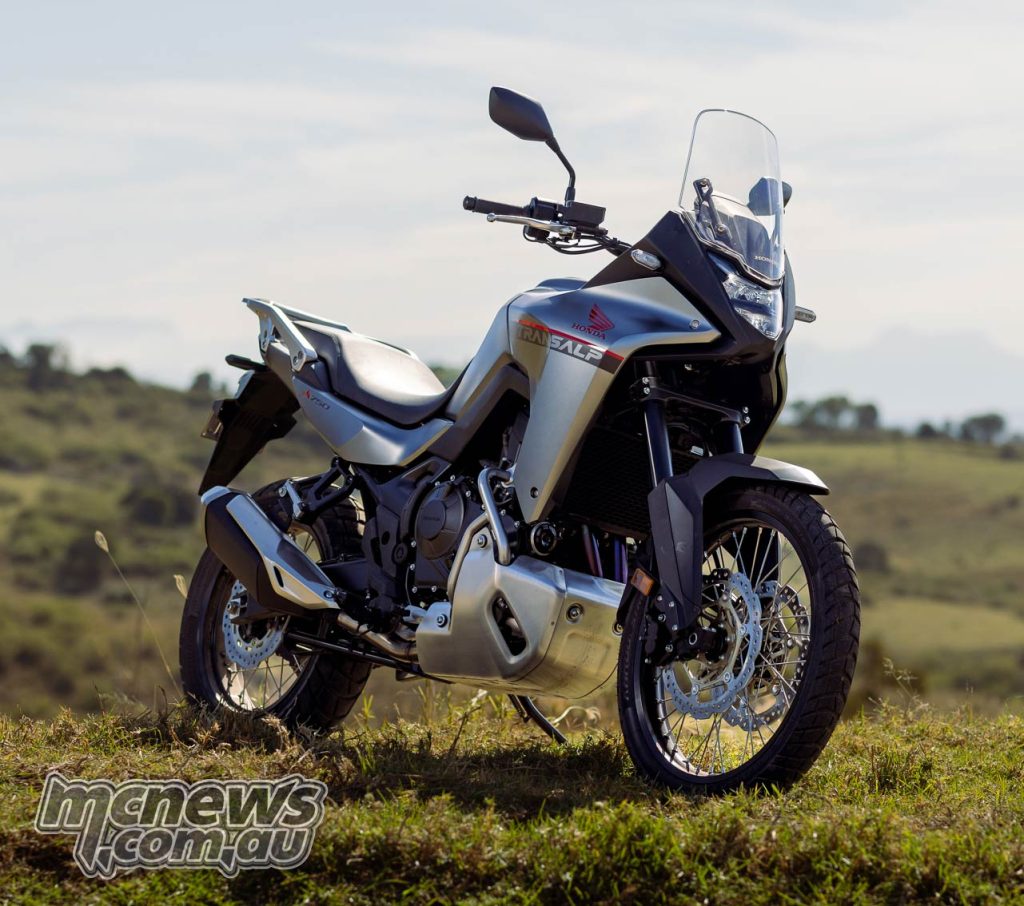
The Honda feels light, and it is indeed a good 20 kg lighter than the Suzuki. The Honda is within a few kilograms of Yamaha’s much less powerful but more dirt oriented Tenere. It almost matches Aprilia’s highly regarded new Tuareg 660 on the scales, but the Transalp has ten per cent more power and torque than the Italian. Then there is also Triumph’s Tiger 900 Rally Pro, Husqvarna’s Norden, Ducati’s DesertX and arguably the machine that really first popularised this segment, BMW’s F 850 GS. But here we will mostly compare the two newest kids on the block.
The way the Transalp shrinks around you is a great confidence booster. Once onboard it feels no larger than a CB500X, and much smaller than Suzuki’s 800 DE. This helps to instil confidence and let’s face it, when it comes to enjoying machines such as these off-road, confidence is everything.
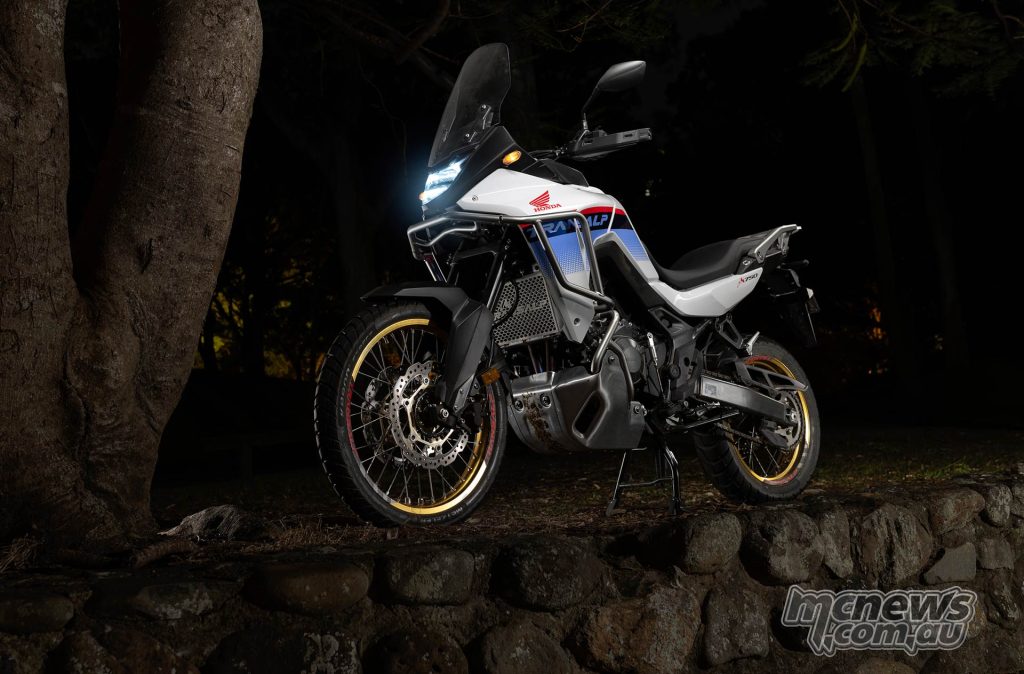
A relatively low 850 mm seat height aids convenience further and makes putting your feet down a cinch. An even lower 820 mm seat is on the options list for those with duck’s disease.
A lowly 4000 rpm is all that is required to maintain 110 km/h on the highway. It will pull that top gear from as low as 2000 rpm and 60 km/h without complaint. However, it does its best work further up the rev range and happily spins towards 10,000 rpm in a linear progressive fashion.
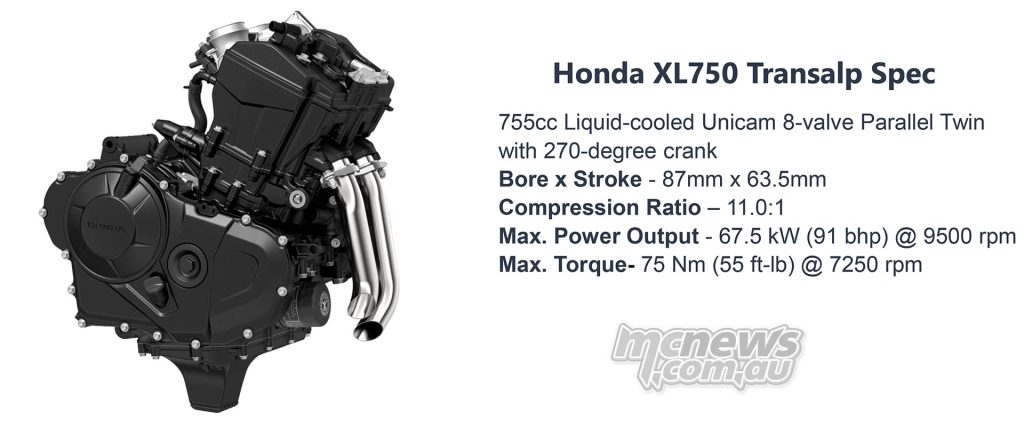
The Honda pulls much harder up top and is more cultured than the slightly larger mill that graces Suzuki’s new 800 DE, but the V-Strom is stronger off the bottom and a bit more urgent through the mid-range. Overall though the Transalp engine is amazingly flexible, really smooth and even musters a quite muscular timbre from the exhaust, but the Suzuki grunts better out of the basement.
Adding a couple of teeth to the rear sprocket to shorten the gearing a little might suit some riders, especially those that aim to take on challenging low speed work off-road. For those sticking more to the black-top leave well enough alone.
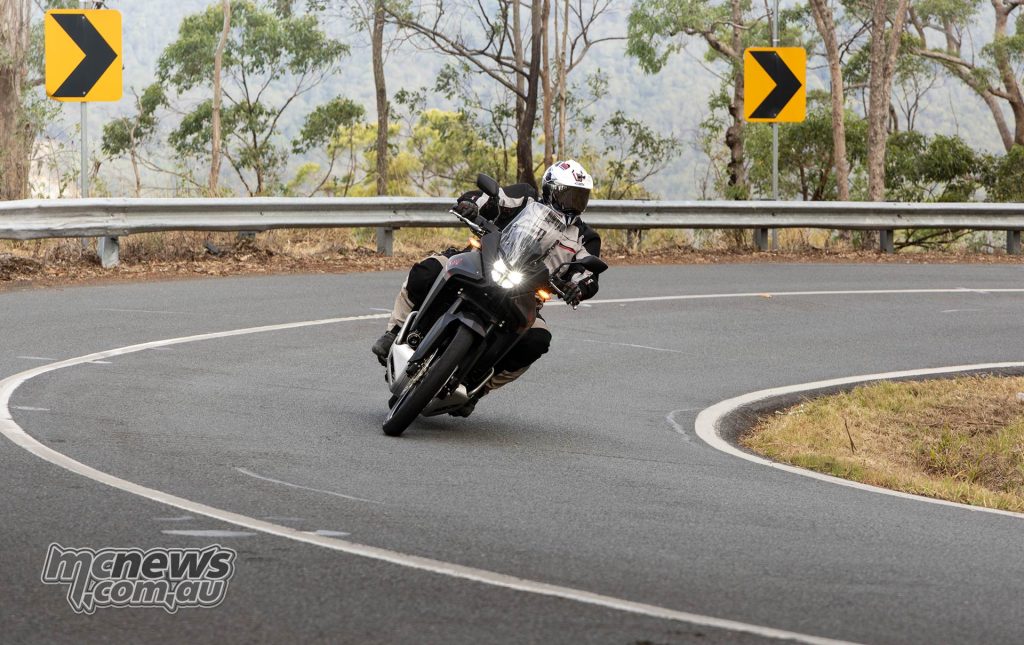
The svelte flanks of the Transalp should help keep the optional luggage system close to the bikes centreline and thus retain its friendly manners. The pannier mounts are not integrated into the sub-frame and demand an accessory mount to be bolted on, which is not ideal. In its defence the Honda system looks to tightly integrate into the tail. There are no horrible pannier racks required which position the hard luggage way out from the centre-line (my pet hate), which suggests the system should work well without destroying the dynamics of the bike.
As to those dynamics, well as soon as we hit some smooth twisting blacktop in the Gold Coast hinterland I was very pleasantly surprised.
The way the Transalp tips in, holds a line, and also swings through rapid changes of direction was a revelation. Nothing with a tall 90/90-21 front tyre has a right to steer and respond to minimal inputs this well. The Transalp is absolutely brilliant in this regard and its sporting ability on the tarmac is not to be underestimated. Lightning quick steering but still eminently stable, that’s holy grail stuff right there…
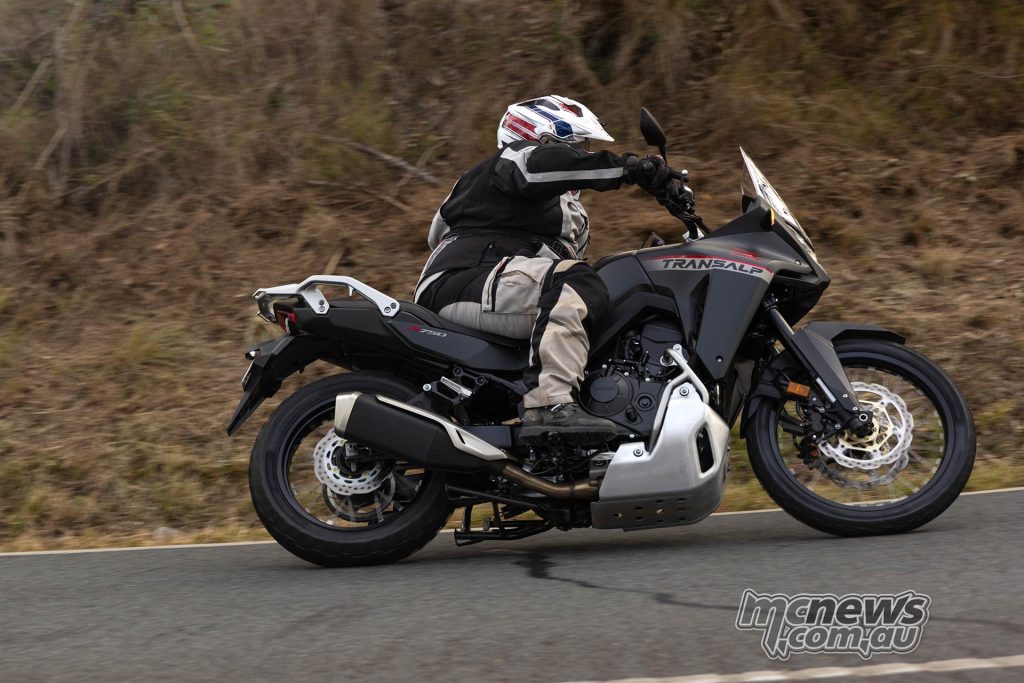
I am sure the profile and construction characteristics of the new Metzeler Karoo Street rubber fitted as standard to the Transalp must play a part in this equation. I believe some bikes will also come shod with Dunlop Mixtour but we rode on the Metzeler hoops.
This handling grace comes via a pre-load adjustable Showa SFF-CA front end and Showa rear shock that also offers only pre-load adjustment. At the rear there is no handy wheel to adjust the pre-load either, it is out with the c-spanner followed by skinned knuckles and swearing, old-school style. Front pre-load is set via a 19-mm spanner on the top fork caps with 15-turns of adjustment on offer.
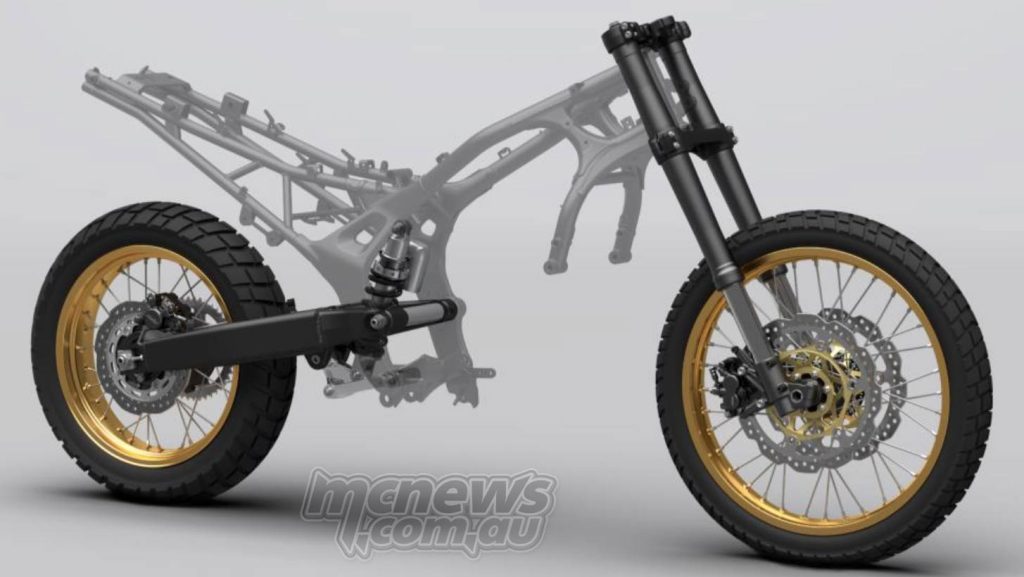
Thankfully the suspension is another area where the Transalp really managed to surprise me. At last it seems as though Honda Europe’s development team must have had a change of staff when it comes to suspension development. In recent times so many Honda shocks have just blown through the middle part of the stroke, with the damping then left floundering while trying to deal with the rebound control.
The tide has turned, the Transalp is quite well suspended in stock trim. However the fully-adjustable set-up on Suzuki’s 800 DE does best it with its longer travel suspension allowing more fore-aft pitch for effective weight transfer which, while detracting from its on-road ability, gives the yellow machine the edge off-road. On road though the Transalp’s handling prowess is far superior.
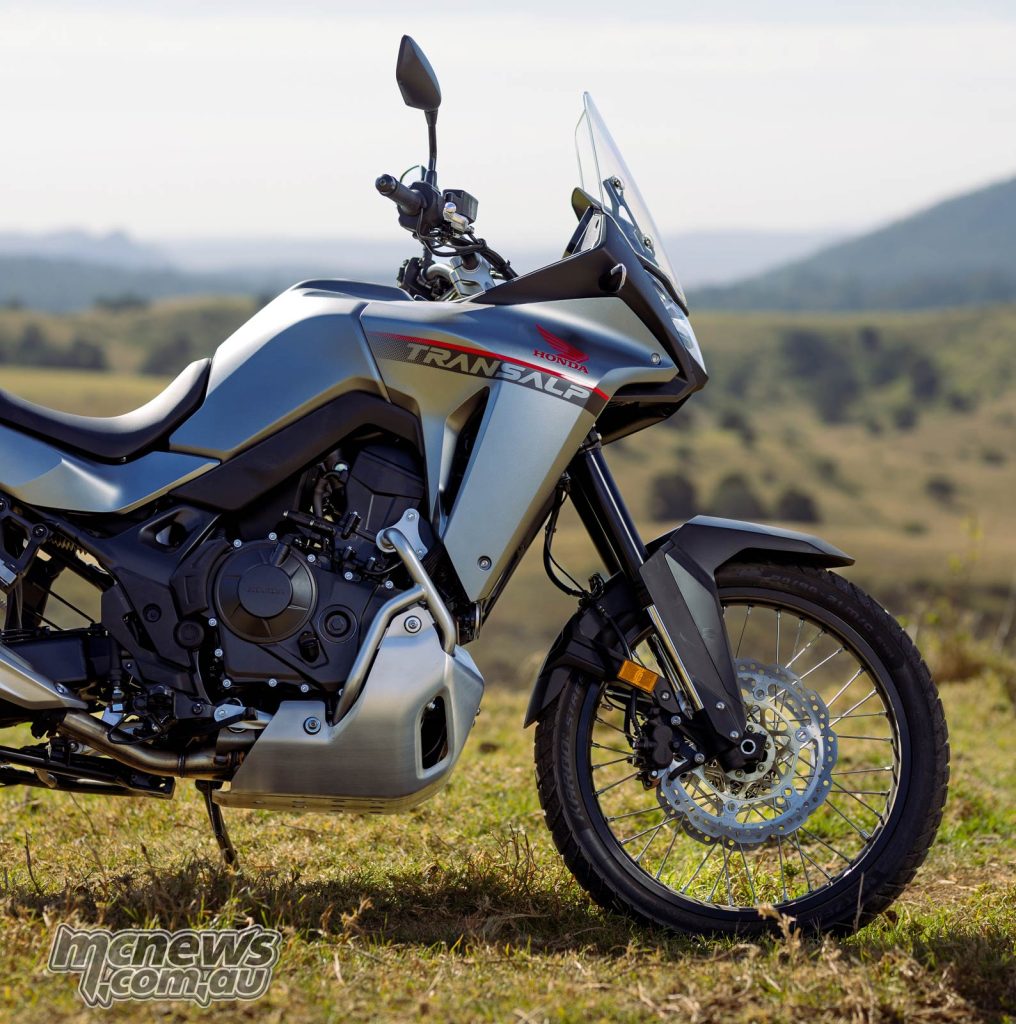
There is also of course the option of dropping in some aftermarket cartridges into the Honda’s Showa forks to extend their already quite generous 200 mm of travel if you want to start pushing the envelope and getting some air. The 18-21 rim sizes means there are plenty of options available in hard-core off-road rubber, if that’s your bag.
Just remember that the Transalp is not a KTM 890 Adventure R, nor does it pretend to be. It is also about ten grand cheaper than that particular Austrian mountain goat. While on that subject I should also remind the uninitiated that Honda’s own Africa Twin is an exceptionally handy adventure mount that is right at the pointy end when it comes to off-road performance compared to most large-capacity adventure machines.
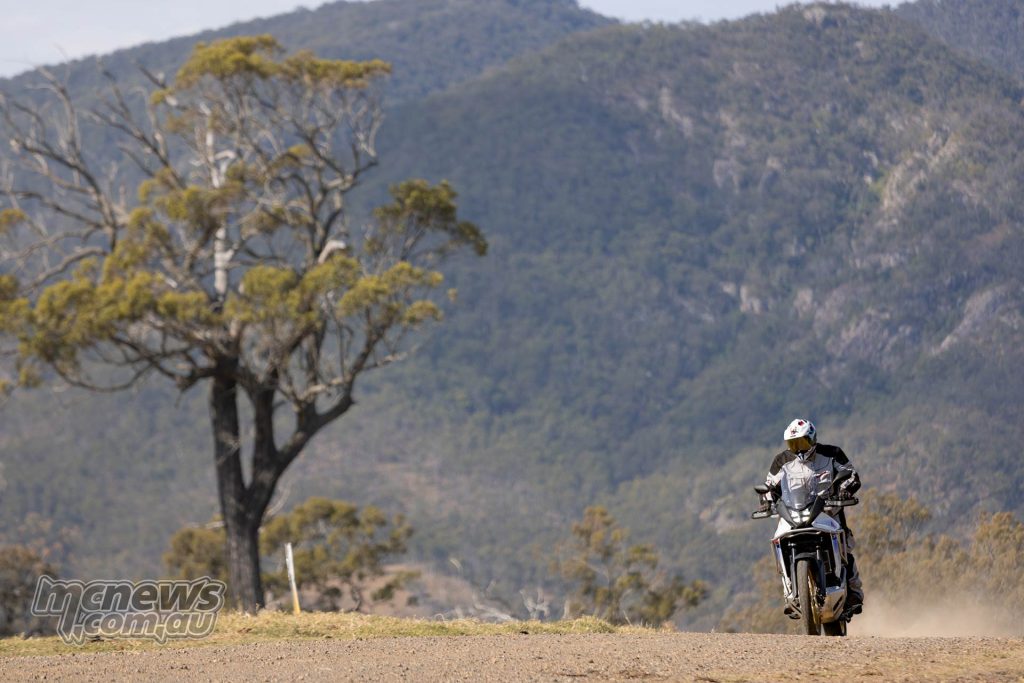
The Africa Twin will jump erosion mounds all day and is ready for true desert expeditions right out of the box. It will of course remain the big daddy of the Honda adventure range, while the Transalp treads the softer middle ground of the adventure spectrum.
While we took in some really nice dirt roads that surround Lake Maroon, including plenty of elevation changes, we didn’t really put the off-road chops of the Translap to the type of test that hard-core adventure riders seek out. That said, it was exactly the type of soft to middling adventure riding that many riders will find suits them down to the ground. Not everyone wants to go full send every time they hit the dirt.
With that 21-inch wheel up front though you can guarantee that the Translap remains more confidence inspiring off-road than anything running a 19-inch front will exhibit, particularly in muddy or sandy conditions. Of the 21-inch shod competition though I would say the Transalp is well ahead of most on the road, while much of the competition will shade it when things get proper dirty.
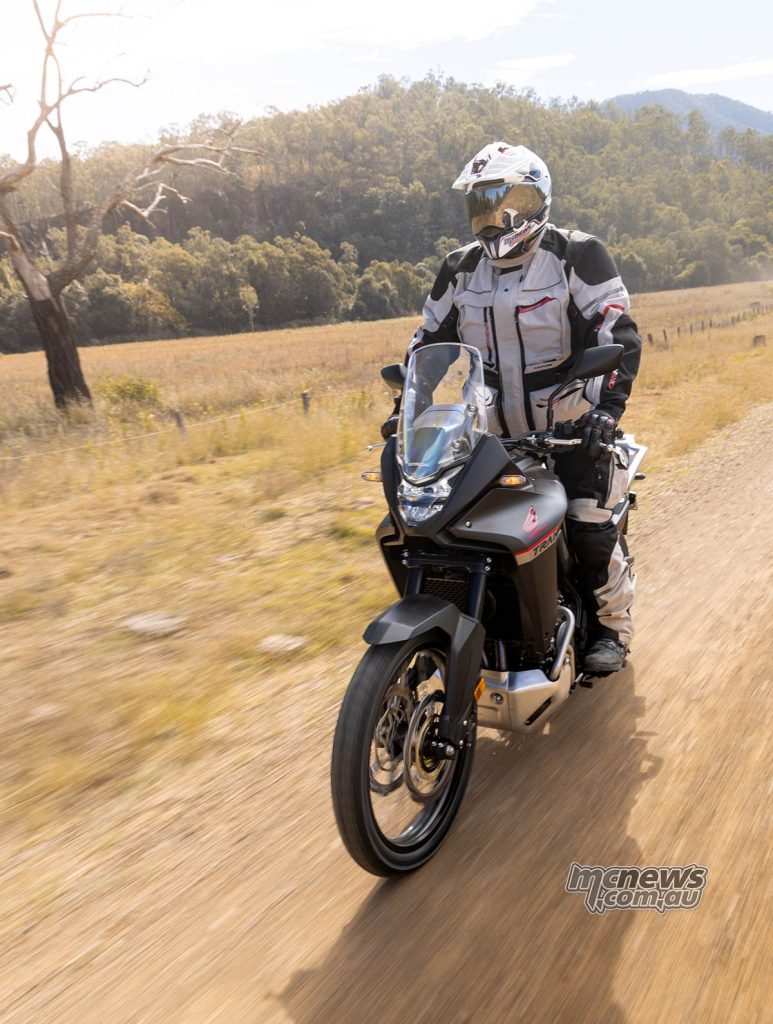
There is 210 mm of ground clearance though so if you ride to the conditions then it will get you out the other end of most tasks one would throw at it. As always the competence of the human in control of it will be where the real limitations lie…
The Nissin brakes are strong and progressive, plenty strong enough to get the ABS working if you really want to grab it by the scruff when setting up for corner entry. The brake lever is adjustable for reach but the clutch lever is not.
The clutch is extremely light despite not having hydraulic assistance thanks to the slip-assist design now so commonplace. The optional quick-shifter ($400) is pretty good, but not up there with the best in the business. I don’t think I’d bother ticking that box to be honest as the gearbox works well enough as it is.
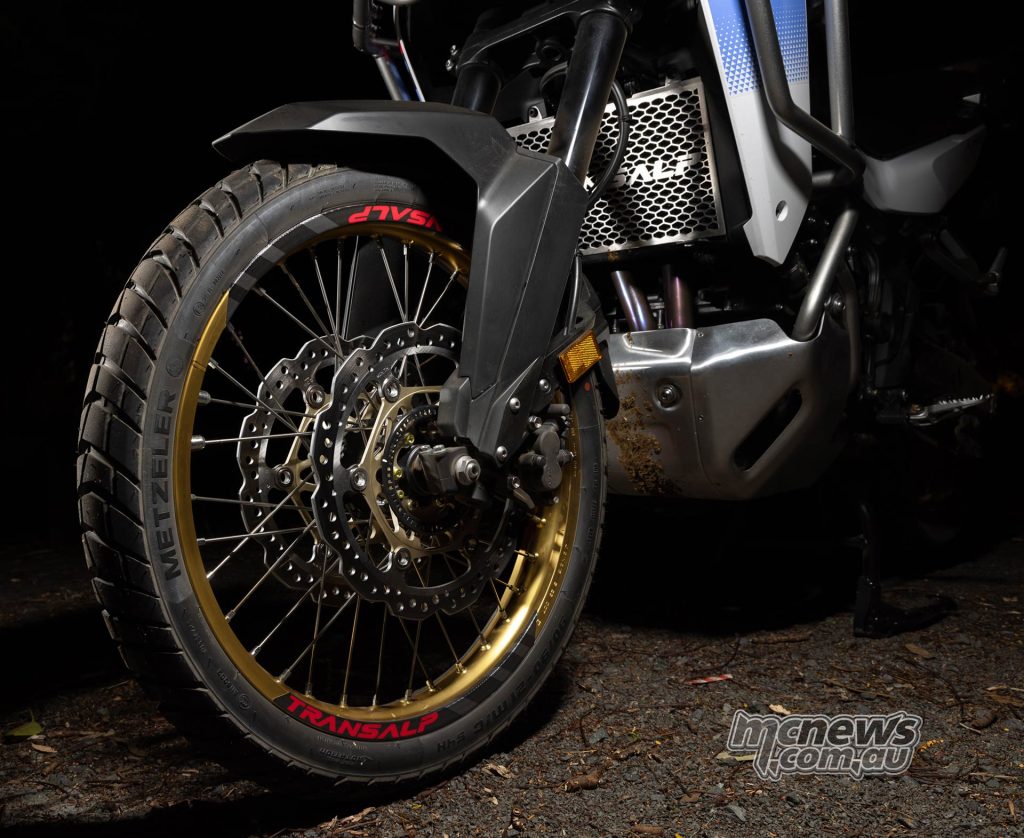
In off-road use the progressive nature of that powerful twin-disc front end and tactility at the lever is to be commended. Likewise the engine’s power delivery can be softened up to aid traction and confidence when the going gets rough.
You will want traction control off though as even when set to its lowest intervention it had me just about head-butting the screen when the fun police hit. Likewise the off-road ABS setting is not quite as liberal as Euro machines allow.
The screen works pretty well considering its minimalist design and I experienced no buffeting during the 300 kilometre launch ride though my Shoei ensconced bonce. I also sampled the optional taller screen and that improved things a little further for my average height, but both screens remain fixed in place with no adjustment on offer. I think the optional wind deflectors that mount on the fairing help in this regard.
Sadly cruise control is not even an option, which is not ideal considering our stalinist ‘road safety’ operations across Australia.
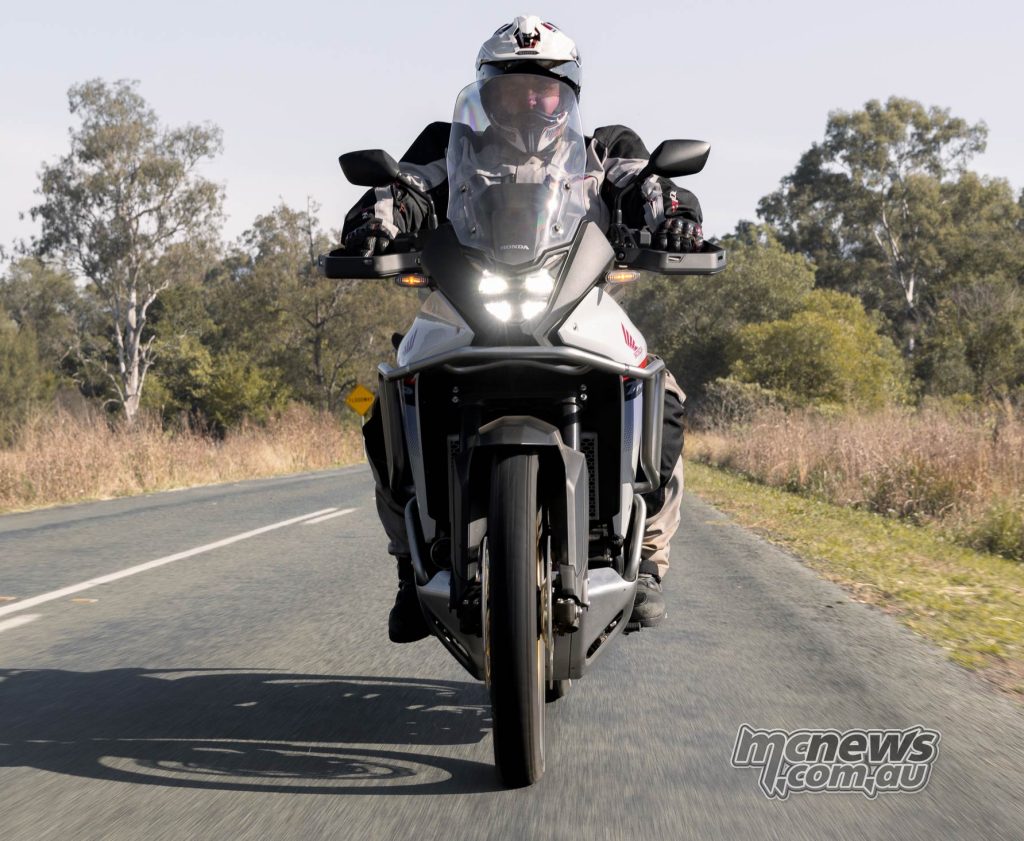
Due to the rims being tubed there is no tyre pressure monitoring system but on the upside the wheels are the same as those used on the Africa Twin so are well proven as robust.
Ergonomics are natural and welcoming and while the seat feels good for the first couple of hours, the perch did start to see move around on it a little late in the day, but maybe I am just getting a bit soft in my old age… The ergonomics also work pretty well while standing but don’t feel quite as natural.
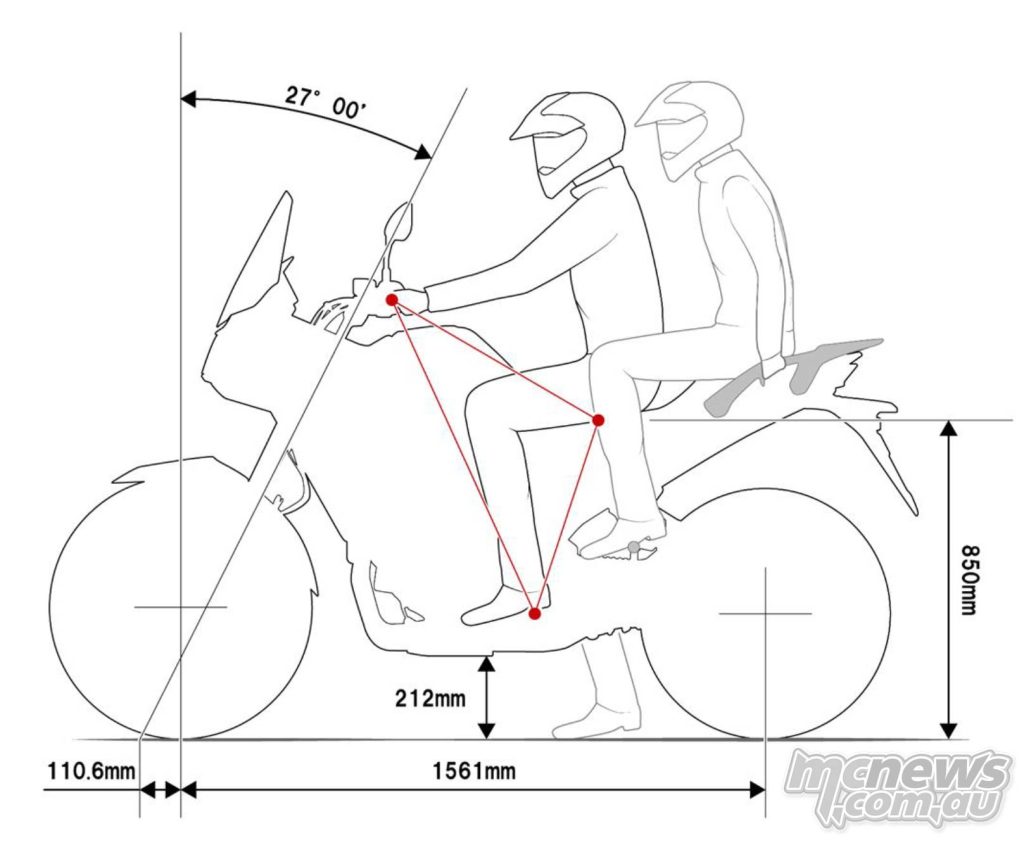
Heated grips are optional ($320) but there is an under-seat 15-watt USB-C socket as standard and all lighting is LED. The indicators are self-cancelling. Hand-guards are not standard.
Negotiating city traffic on the Transalp was a fuss-free and comfortable affair. In a lot of stop-start traffic I could start to feel heat generated from the engine making its way up towards my torso but not on to my legs or midriff. Not ideal, but not terrible.
The 17-litre fuel capacity should be good for 300 kilometres between fuel stops in most conditions.
The full-colour instrumentation is comprehensive but somewhat unnecessarily complicated. Four standard riding modes are offered along with a user customisable map where you can change the engine response, engine braking, traction control and ABS interventions at differing levels that suit you. The dash has various lay-outs to choose from and automatically adjusts brightness in varying light conditions. All these bells and whistles but no cruise control….
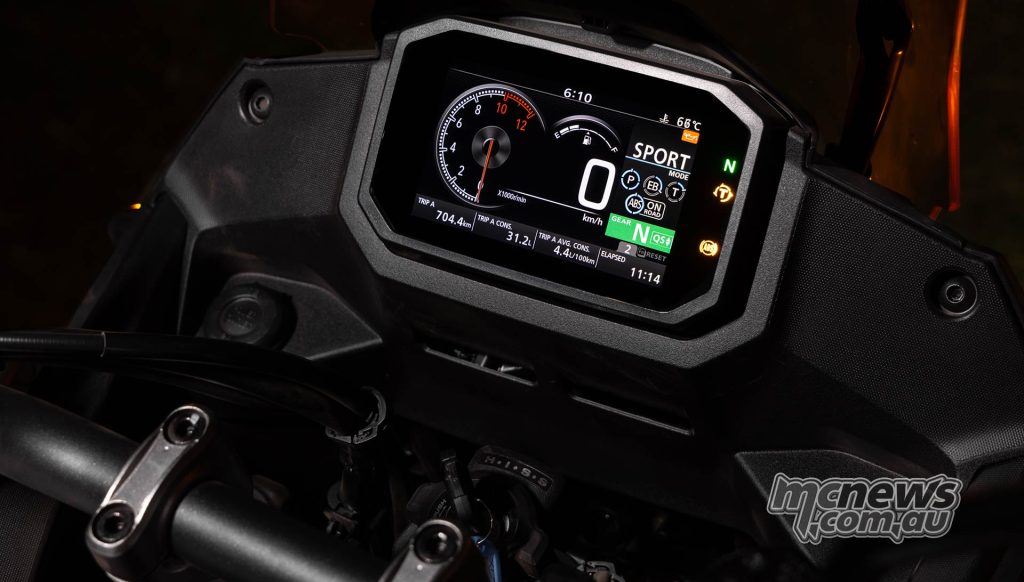
The ABS has an off-road mode that can deactivate the ABS on the rear and traction control can also be deactivated. Traction control remains off should you turn the engine off with the stop-start button, but you must dive into the menus once again should you turn the key off. At first this is onerous but an owner would soon gain the muscle memory to alleviate any frustrations. There are some cues on the display that can help you navigate the myriad options via the four-way controller on the left-hand switch-block, but its not as intuitive as it could be.
There is also Bluetooth functionality that when paired to your phone and headset navigation and multimedia functions can be controlled from the LH switch-block via Honda’s Smartphone Voice Control System. We didn’t get time to evaluate these features during the launch so we might have to leave that for Wayne to investigate and report back on when we get him a bike to put through his regular test loop down Anglesea way.
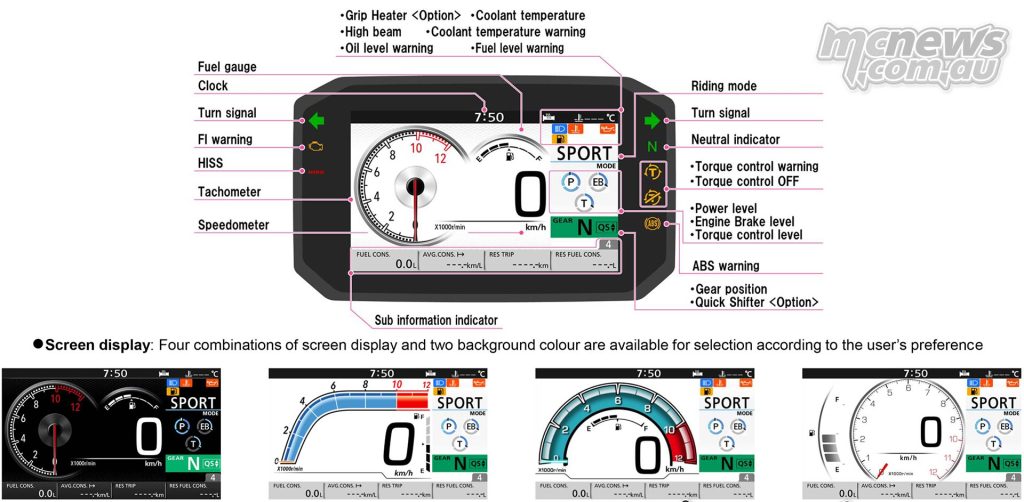
When looked at in pictures the Honda red-white-blue tri-colour stands out as the natural option but in person both the other offerings also present well. I’d get a look at the colour options yourself in person before making a choice. I really liked the Matte Iridium Grey Metallic in the flesh.
Honda have a slew of accessories available for the Transalp and have come up with various packs that help reduce the costs compared to buying various components all separately.
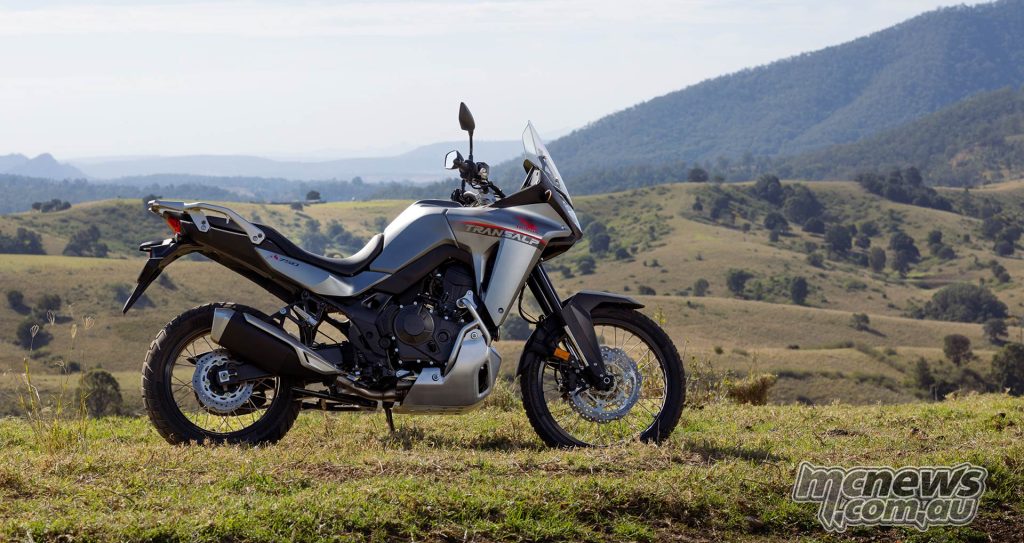
While the headers and oil filter are quite exposed, unless you are planning on heading to the outback and getting seriously remote you could probably save yourself some money and not bother with the bash-plate and engine protection guards. That said the Honda skid-plate ($762) looks to be sturdy and really well designed for an OE option, very impressive in fact, so if it helps give you peace of mind then go for it. However, I belive you will also need the engine guard ($614) and attachment kit ($120) so that starts to become an expensive ask and will see many look to aftermarket skid-plate options as they become available.
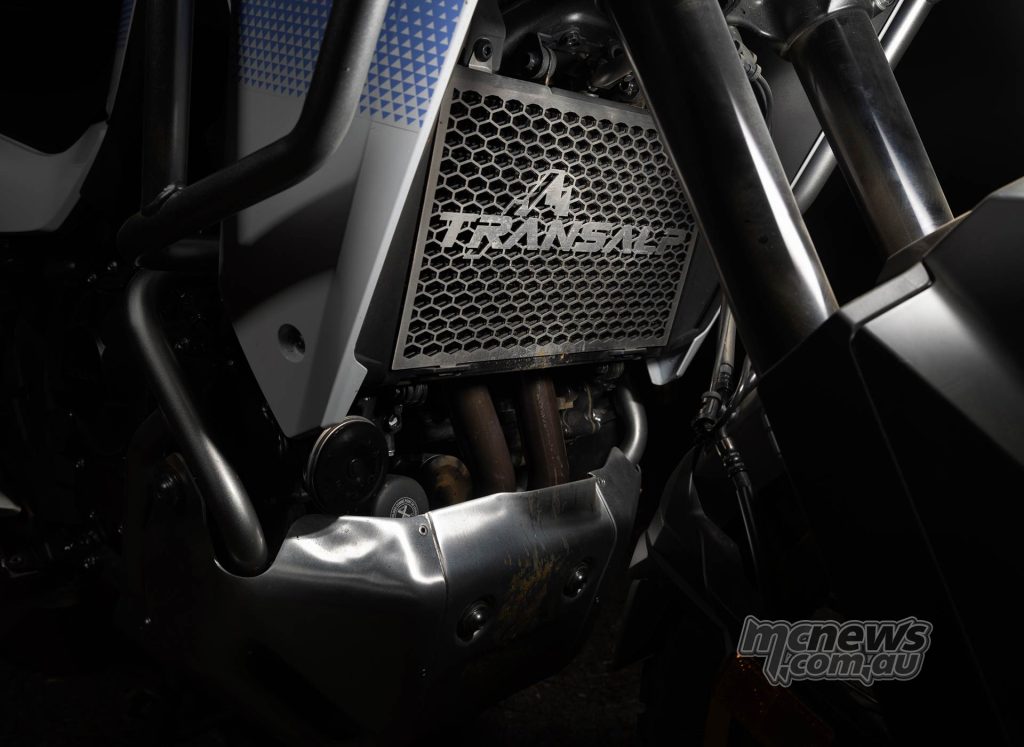
Honda do a discounted Rally Pack which includes most of the protection bars, skid-plate, rally pegs, quick-shifter and knuckle-guards for $2150 all-inclusive, which saves you $260 compared to optioning these items individually.
Clearly things start to add up if you want to go full warrior mode, but probably better to just not fall off. If your ambition does end up outweighing your talent that’s what insurance is for…
I would be looking for a pre-filter for the air intake tract to prevent dusting the engine if heading outback or riding in groups. The aftermarket will be all over this within weeks I am sure.
The pannier mounts and luggage also look pretty impressive and would be something I would investigate for commuting or a lot of road based touring. The right case holds 26-litres and the left 33-litres. The panniers and their support brackets come in at around $1850, or come as part of the $2500 Touring Pack which also adds heated-grips, pannier inner bags and some alloy external insets that vajazzle the panniers up a little.
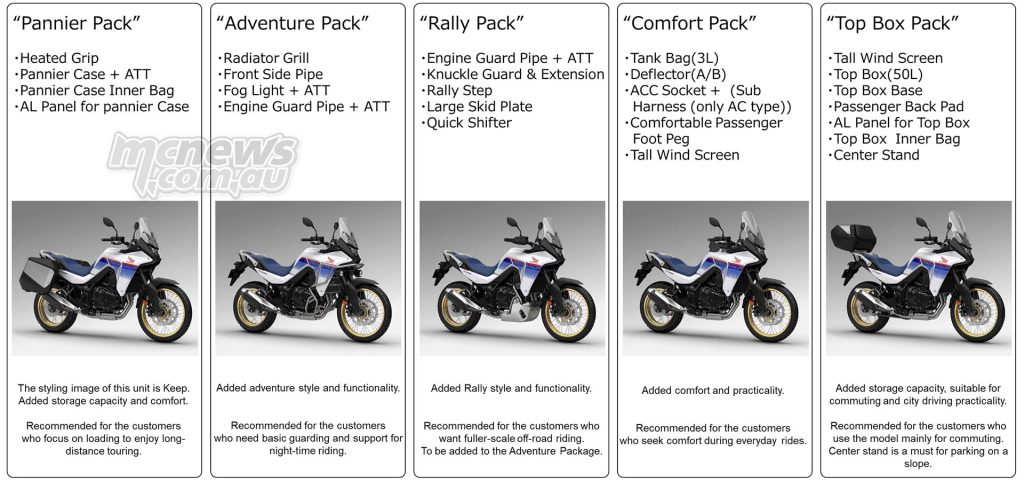
Find more on the different accessory packs via the graphics in the image gallery further down this page.
There is a handy little three-litre tank-bag available ($233) which I would certainly plump for. A top box is available too but I would choose a decent roll-bag for the standard rear rack instead.
Sure you can tick all the boxes and make this 14.5k (plus on road costs) bargain into a much more expensive ask, that then also carries more weight… However, in the case of the Transalp I would largely recommend just enjoying that absolutely bargain priced entry ticket into what is an extremely well engineered and Japanese made machine in largely stock form.
Bank the savings to pay for your first few services and tyre changes, then just get out and bloody ride the thing at every opportunity. The Transalp is eminently affordable and plenty capable as it is, if it floats your boat just get out there and enjoy it. I’d happily ride one around the country tomorrow.
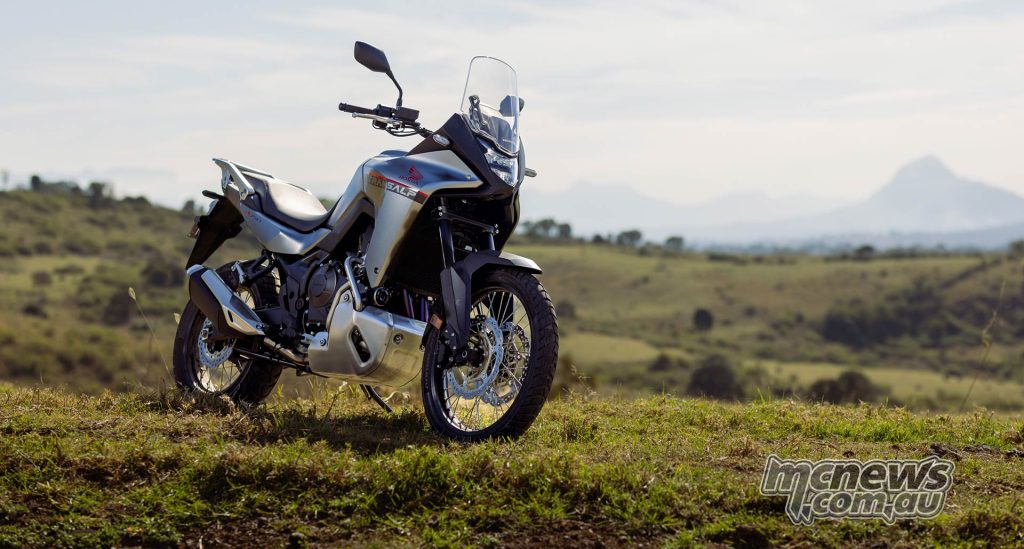
Honda XL750 Transalp at a glance…
The hits…
- Steers beautifully and its sporting prowess on a tight and twisty section of blacktop impresses.
- Very nice quality of finish.
- Brakes are strong but progressive enough to be friendly enough off-road.
- Price of admission.
The misses…
- Suspension adjustment limited and not easily fettled.
- No cruise control or tyre pressure monitoring, even as options.
- Not as naturally competent off-road as other 21-inch fronted options on the market.
- Missing a few trinkets but if it was fully loaded then it wouldn’t be this affordable…
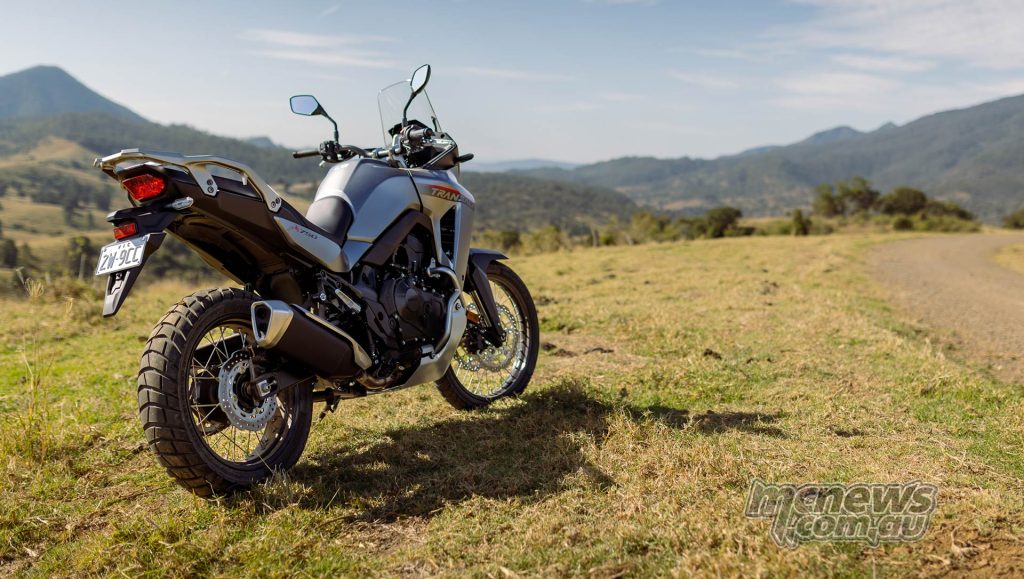
| Honda Transalp Specifications XL750 | |
| Engine | Four-stroke parallel-twin |
| Capacity | 755 cc |
| Bore & Stroke (mm) | 87 x 63.5 |
| Phasing | 270-degree crank |
| Valvetrain | Eight-valve, Unicam |
| Compression Ratio | 11:01 |
| Power | 91 horsepower (67.5 kW) |
| Torque | 75 Nm at 7250 rpm |
| Fuel System | PGM-FI Electronic Fuel Injection |
| Cooling | Liquid |
| Oil capacity | 3.9 litres |
| Starter | Electric |
| Transmission | 6-speed |
| Drive | Chain |
| Brakes (F) | 2 x 310mm discs, ABS, twin-piston calipers |
| Brakes (R) | 1 x 256mm disc, ABS, single-piston caliper |
| Front Suspension | 43mm inverted telescopic fork, pre-load adjustable |
| Rear Suspension | Monoshock, Pro-Link, pre-load adjustable |
| Fuel Capacity | 16.9 L |
| Wheelbase | 1,560 mm |
| Caster Angle | 27-degrees |
| Trail | 111 mm |
| Ground Clearance | 210 mm |
| Overall Height | 1,450 mm |
| Overall Length | 2,325 mm |
| Overall Width | 838 mm |
| Seat Height | 850 mm |
| Kerb Weight | 208 Kg |
| Tyres (F) | 90/90-21 |
| Tyres (R) | 150/70-18 |
| Warranty | 24 Months |
| RRP | $14,499 +ORC |





































